Bed Stuy Homeowners Call on LPC to Preserve Historic Brownstone Blocks
More than 50 people spoke at a heated public hearing on landmarking a section of Bed Stuy on Tuesday.

Willoughby Avenue and Hart Street residents outside the municipal building at 1 Center Street. Photo by Anna Bradley-Smith
More than 30 years after the city’s landmarking body first considered preserving a historic section of Willoughby Avenue and Hart Street in Bed Stuy, residents — some whose brownstones have been in their family for five generations — were able to share at a public hearing why they are calling on the agency to designate part of their neighborhood as a historic district.
At Tuesday’s meeting of the Landmarks Preservation Commission, 57 people testified in a heated three-hour-long public hearing about the proposed designation of the Willoughby-Hart Historic District. Creating the district would mean more than 100 houses over most of Willoughby and Hart streets between Nostrand and Marcy avenues would be landmarked and protected from significant alteration.
While the majority of the 32 people who spoke in person at the hearing were in vocal support of preserving the historic, mostly brownstone architecture in the neighborhood, three men, two of whom are real estate lawyers and one who owns a townhouse in the area, decried the proposal. All three said landmarking is discriminatory against large Jewish families who need to expand their homes and that there isn’t anything landmark worthy about the blocks. Those who spoke in support cited the area’s importance to local history and community and its well-preserved late 19th century row houses and streetscape.

Manhattan real estate lawyer Adam Leitman Bailey accused the LPC and those trying to get the historic brownstones landmarked of antisemitism. He invoked October 7 and said “never in the history of the United States of America has a body voted to remove this many Jews from streets through passing a vote via a law and government body.”
Bailey accused the commission and local community board of excluding the Jewish community from the landmarking process, and said actions by the commission amount to housing discrimination.
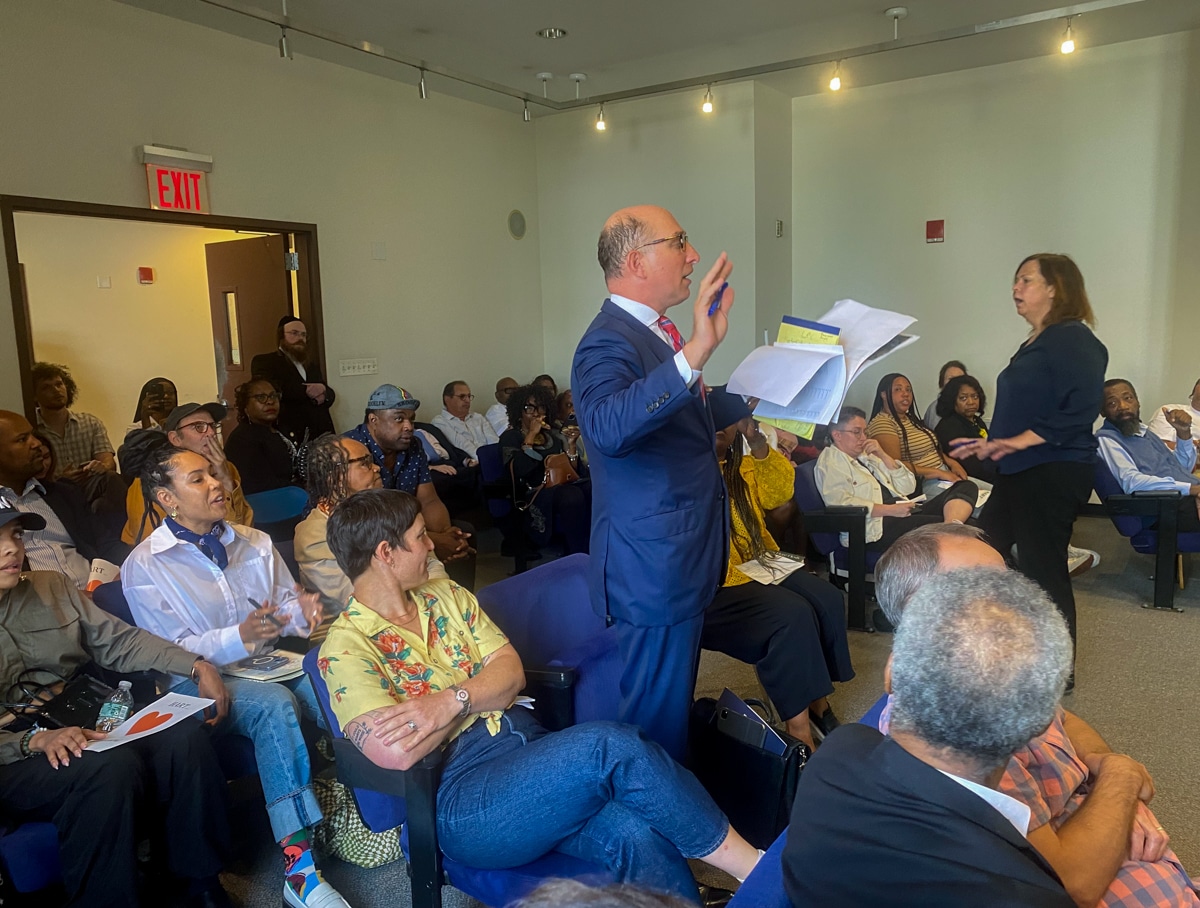
However, the majority of the speakers in the room and those who spoke on Zoom rejected Bailey’s comments. They called the blocks inclusive, friendly, and loving, and said they had been that way over many generations. “It pains me to think that we are being accused of being anything else but,” said Joanne Joyner-Wells, who said she grew up riding her tricycle up and down Willoughby Avenue, where she still lives.
“All we ask is if you are given the honor and blessing of acquiring one of these beautiful homes, that you make a decision to become a part of the community that you desire to join with the same goal of preservation,” she said.
Joyner-Wells added that brownstones in Bed Stuy have an inherent element of connectivity. “I think that element is what we hope to maintain: connectivity to the community, its rituals, and routines, its history most of all, and its beauty.”
“I assume that if you buy a house adjoining mine, you understand that you are connected to me by a wall. Therefore we are neighbors, or we should be neighbors.”
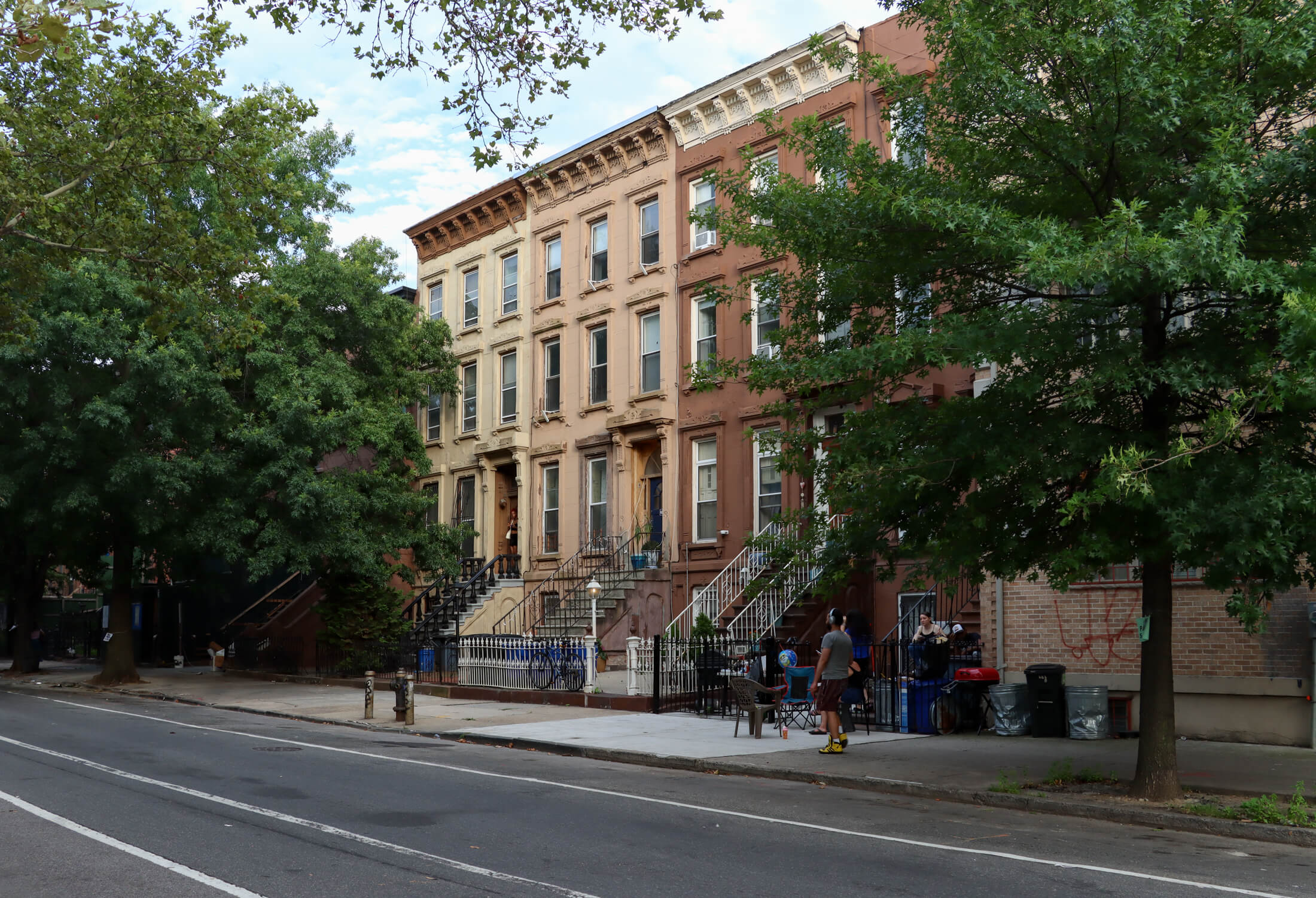
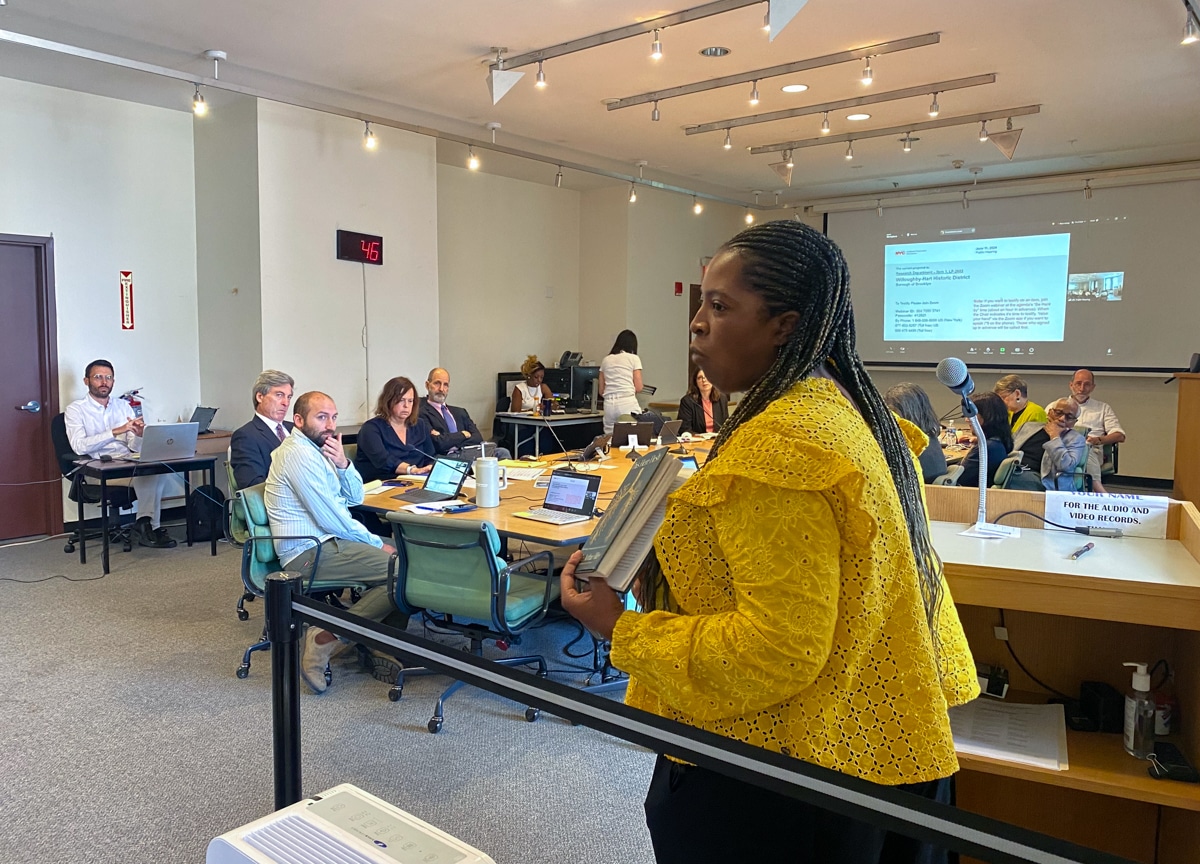
Willoughby Avenue tenant Jules Bartkowski said that as a Jewish member of the community, whose family members had survived the Holocaust, the notion of antisemitism should be completely removed from the understanding of the landmarking issue.
“My mother was born in a displaced persons camp, and my grandfather passed along to my mother, who passed along to me, a desire for justice, democracy, and equal rights. What we are looking for in this situation is to preserve the historical integrity of this community,” he said. “I have witnessed in the time that I have lived there, the displacement of the historic community, the destruction of historic buildings, we are unwilling to continue to watch that.”
He called on the LPC to vote quickly in favor of landmarking, adding, “I refuse any antisemitism accusations, it breaks my heart, [it] is personally offensive.”
Overall, 12 of the 57 people spoke against landmarking, all arguing it would impede on Jewish families’ rights to extend their houses. They lamented that the hearing was being held before the Jewish holiday of Shavuot, which they said limited the number of people able to attend. Willoughby Avenue owner Abraham Wertheimer said while he plans to preserve the facade of his house, he wants to be able to add a backyard extension and is against the commission governing those.
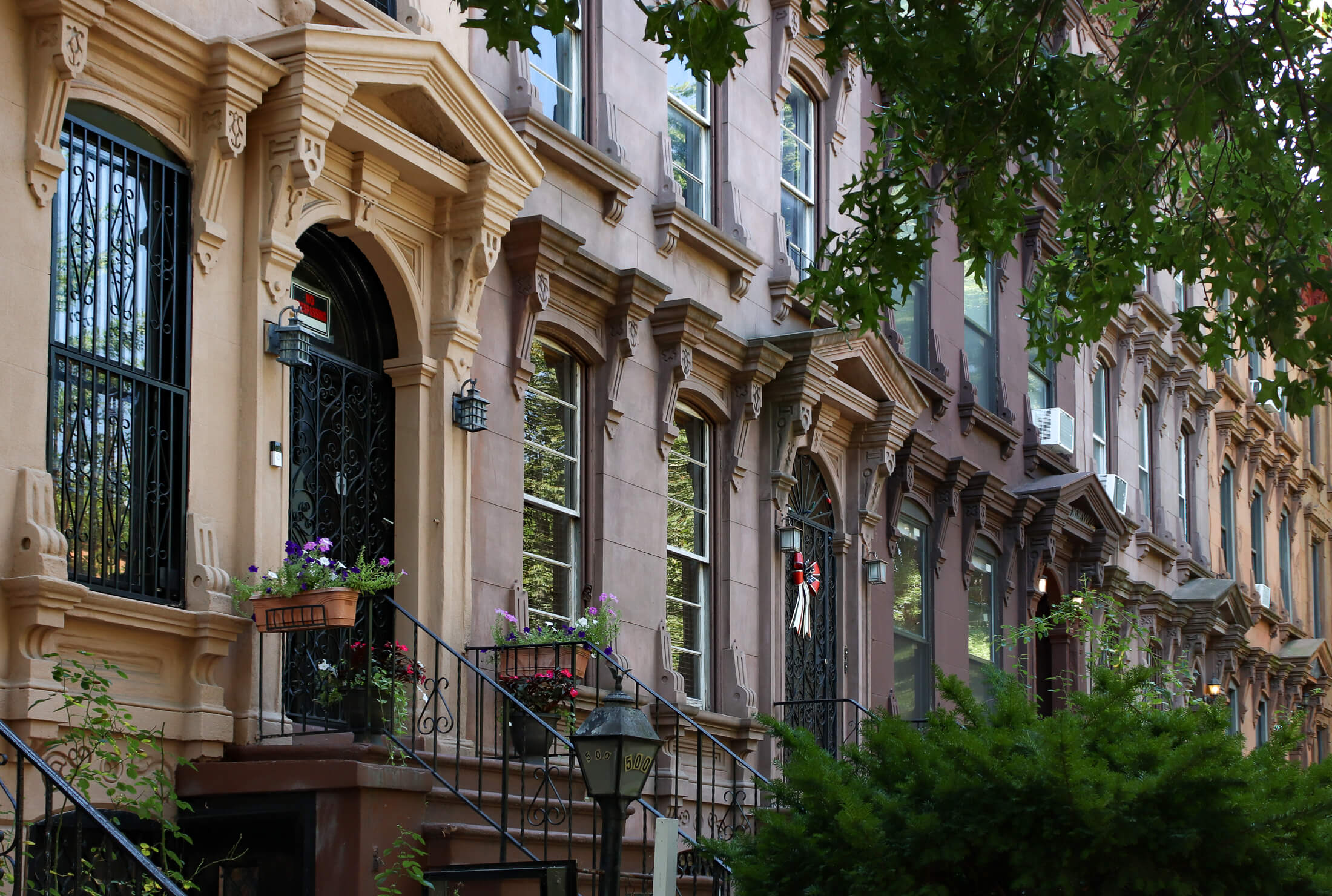
Hart Street townhouse owner Rabbi Shaya Saks said the Jewish community feels like the LPC “is against us,” adding “we lived in Williamsburg and slowly we moved now to Bed Stuy because as mentioned, we have large size families, we need bigger houses, and by doing this landmark this is stopping us and blocking us from being able to use those properties that we already purchased.”
The 2022 demolition of the historic French Gothic Revival Jacob Dangler mansion, which served as a cornerstone of Willoughby Avenue and is now an empty lot owned by a Florida-based developer, came up multiple times at the hearing, with numerous speakers saying they don’t want to see any more destruction of the history on their blocks.
Multiple people said the site should be included in the proposed historic district and, to applause, Christina Conway of the Victorian Society of New York said the commission having a role in the new building’s design is “absolutely within the sphere of good preservation planning.” She added, “including the lot would also have the beneficial effect of sending a message that cavalier actions regarding the landmarks laws have consequences.”
Issues around construction and unpermitted work on the blocks also came up multiple times. Amelia Martinez said from 2022 to 2024 the Department of Buildings recorded 200 complaints and 120 violations on the blocks. These included “stop work orders, cutting, construction, demolitions, expansions from two- to three-families to four- to six-family homes, extending in backyards, large machinery, dumping debris into neighbors’ yards, and excavating so far down into basements that they’re risking the structural integrity of foundations, all without permits.”
She said as a third-generation Brooklynite, she knows the impact of gentrification on a neighborhood, “having watched my family’s neighborhoods of Los Sures in Williamsburg and Greenpoint vanish, only to be replaced by new developments, pushing out the culture and communities that made them what they were.”
She said the same occurrances are beginning to encroach on the brownstones of Bed Stuy, where the community is “witnessing significant architecture decimated and replaced by structures lacking quality and charm.”
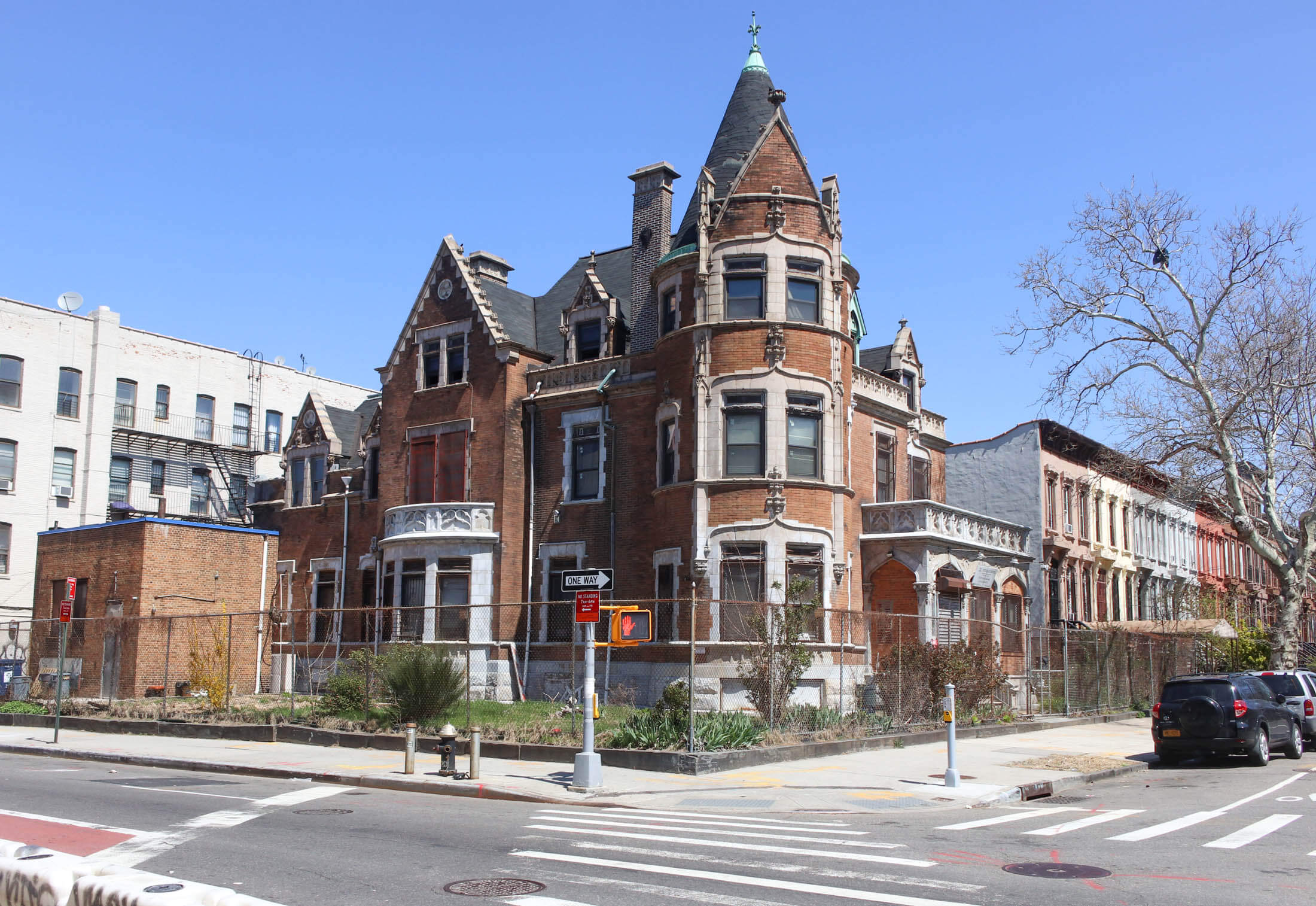
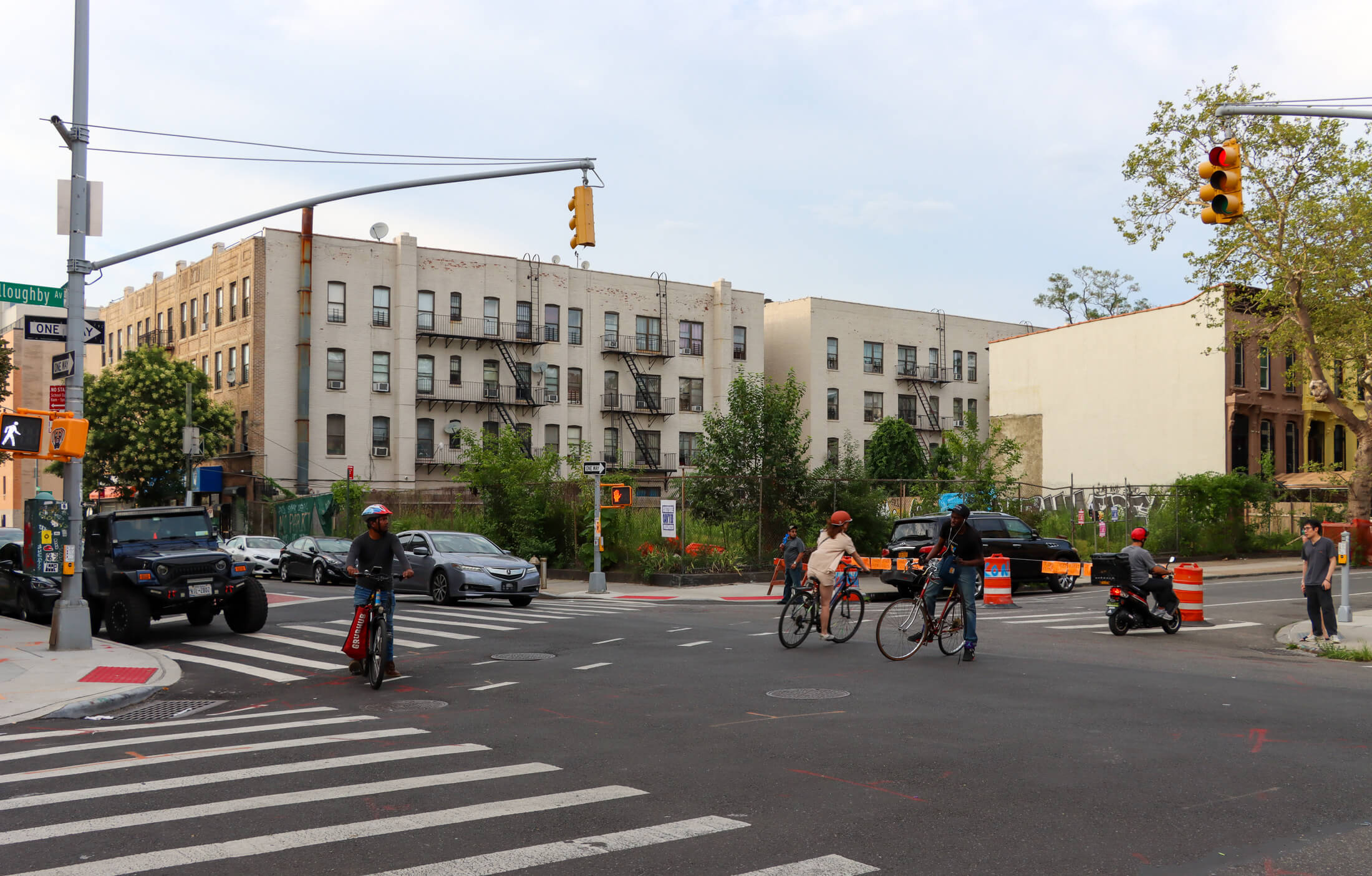
Black residents of Willoughby Avenue and Hart Street shared stories of their relatives buying the properties despite redlining, and looking after them for future generations of their families, as well as building the community into what it is today. They called on the LPC to support them in their efforts to continue as the caretakers of the historic buildings for future generations to come — who have the right to experience the city’s history, they said.
Assembly Member Stefani Zinerman spoke about the pressing issues of deed fraud and displacement happening in Bed Stuy, saying protecting the community is of utmost importance, with homeowners being harassed and targeted every day. She urged the commission to “do the right thing” with the landmarking vote.
Everett Hughes, who owns a house on Hart Street and another on the landmarked section of Decatur Street, said the importance of landmarking for him is that his homes, which he has restored to original details, maintain historic value and he is able to pass them down to his children.
“That’s why we need to have landmarking, so we can preserve the integrity of the neighborhood, we can have generational wealth, and we can pass our buildings down, not to our kids but to our grandkids.” He added that while there are rumors of insurance costs going up and property values going down with landmarking, that isn’t the truth.
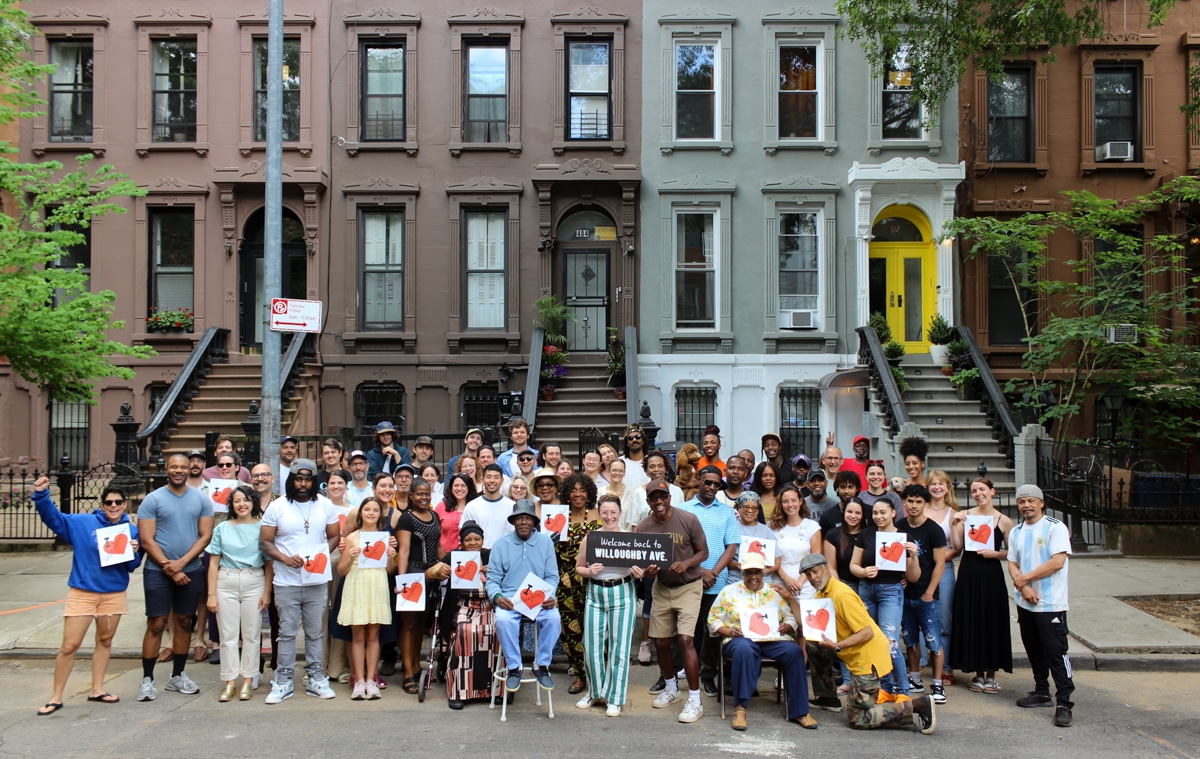
One mother said her daughter asked her to tell the commissioners that the blocks need to be protected because they’re like Sesame Street, and one woman who grew up on the block reminisced how the bass player for Jimi Hendrix had done so too.
Willoughby Avenue resident Lauren Cawdrey said her house had been built in 1875. “Just to put that in context, that predates modern marvels like the automobile, lightbulbs, and even the Brooklyn Bridge. The fact that these brownstones are not only surviving, but thriving is a testament to their structural integrity, their classic beauty, and the nurturing of custodians who are lucky enough to inhabit them.”
Save Harlem Now Executive Director Claudette Brady, a longtime resident of Bed Stuy and Crown Heights who has been instrumental in landmarking other parts of Bed Stuy and Crown Heights, said the blocks in question are the only two in the area of northern Bed Stuy that have maintained their original architectural integrity. “The designation of Willoughby-Hart Historic District is not about pushing one group out of the neighborhood. It’s about most importantly completing a process that started 32 years ago and upholding the tenets of LPC’s equity framework,” she said.
Meanwhile, architectural historian Suzanne Spellen, a former resident of Bed Stuy and Crown Heights who has helped landmark the latter and writes a column for Brownstoner, said the lots contain “quintessential Brooklyn brownstones” that maintain a unique sense of place that is “part and parcel of landmark status.”
She added that the area was initially inhabited by German immigrants, and later, under government-backed redlining, newly emigrated Russian Jews and Black people. “These blocks could have gone the way of far too many others, with rundown houses, burnt-out shells, and empty lots. They could have been razed for housing projects. But they remained intact thanks to the predominantly African American homeowners who purchased them and cherished them as the culmination of the American dream of home ownership.”
In regards to the historic architecture, Historic Districts Council Executive Director Frampton Tolbert called the blocks an “especially cohesive and highly intact streetscape of late 19th century Neo-Grec, Second Empire, and Romanesque Revival row houses that create a unique sense of place.”
LPC Chair Sarah Carroll closed the public hearing, thanking the community for testifying and saying the commission would now schedule a vote on whether to designate the proposed Willoughby-Hart Historic District.
Related Stories
- Proposed Willoughby-Hart Historic District to Get Public Hearing at LPC
- Locals Talk Next Steps for Landmarking Willoughby Hart Historic District
- Bed Stuy Residents Want Brownstone Blocks Landmarked in Aftermath of Dangler Demo
Email tips@brownstoner.com with further comments, questions or tips. Follow Brownstoner on Twitter and Instagram, and like us on Facebook.









Thank You…Jules Bartowski…. I’m really proud that you’re an ally. It’s very admirable of you. The houses need to be landmark. It preserves the community. I’m a life long Bed Stuy resident & it’s unrecognizable now. REGENTRIFICATION has changed everything. Making it unaffordable for many of us to continue to live there.
We’re always expected to conform. It’s not Antisemitic either. Seriously are we welcomed were the majority of Jewish people reside?? They’ve torn down many BedStuy landmarks to build unaffordable affordable housing. Keep the integrity of the neighborhood.